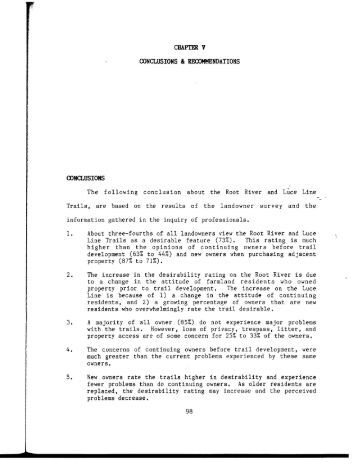
Does your Dissertation Have the Following?
Summary and Concluding Remarks of the Dissertation In document UCLA UCLA Electronic Theses and Dissertations (Page ) In this dissertation, three applications based on ferroelectric phase transformation were studied; ferroelectric pulsed power generator, pulsed energy storage, and ferroelectric thermal energy harvesting · The conclusion is the very last part of your dissertation or thesis. Its main purposes are to: Clearly state the answer to the main research question Summarise and reflect on the research Make recommendations for future work on the topic Show what new knowledge you have contributed The conclusion should be concise and engaging · Consider the steps below to help you get started when writing the conclusion of your study: Restate the research topic. Reiterate the thesis (objective of the study). Make a summary of the main points. Mention the relevance or outcomes. Wrap up your thoughts. Avoidable Issues Inability to be concise

Provide Answers to The Primary Question in Your Research
· A Checklist for Your Dissertation Conclusion 1. Answering the main research question. 2. Summarising the overall argument. 3. Reflecting on the research aims, methods utilised and results of your research. 4. Mentioning any encountered limitations. 5. Discussing any kind of relevant recommendations. 6 · Consider the steps below to help you get started when writing the conclusion of your study: Restate the research topic. Reiterate the thesis (objective of the study). Make a summary of the main points. Mention the relevance or outcomes. Wrap up your thoughts. Avoidable Issues Inability to be concise · While a summary restates the facts and elements, which are discussed in the original text, conclusion tends to synthesize all the points and wrap up the discussion. It helps the reader understand the importance of the research. Ideally, the length of the summary is 5% to 15%, whereas the conclusion constitutes only 10% of the original work

Discussion vs conclusion
· Consider the steps below to help you get started when writing the conclusion of your study: Restate the research topic. Reiterate the thesis (objective of the study). Make a summary of the main points. Mention the relevance or outcomes. Wrap up your thoughts. Avoidable Issues Inability to be concise · The conclusion is the very last part of your dissertation or thesis. Its main purposes are to: Clearly state the answer to the main research question Summarise and reflect on the research Make recommendations for future work on the topic Show what new knowledge you have contributed The conclusion should be concise and engaging · A Checklist for Your Dissertation Conclusion 1. Answering the main research question. 2. Summarising the overall argument. 3. Reflecting on the research aims, methods utilised and results of your research. 4. Mentioning any encountered limitations. 5. Discussing any kind of relevant recommendations. 6
Dissertation Conclusion: What Is It?
· Consider the steps below to help you get started when writing the conclusion of your study: Restate the research topic. Reiterate the thesis (objective of the study). Make a summary of the main points. Mention the relevance or outcomes. Wrap up your thoughts. Avoidable Issues Inability to be concise Summary and Concluding Remarks of the Dissertation In document UCLA UCLA Electronic Theses and Dissertations (Page ) In this dissertation, three applications based on ferroelectric phase transformation were studied; ferroelectric pulsed power generator, pulsed energy storage, and ferroelectric thermal energy harvesting · The conclusion is the very last part of your dissertation or thesis. Its main purposes are to: Clearly state the answer to the main research question Summarise and reflect on the research Make recommendations for future work on the topic Show what new knowledge you have contributed The conclusion should be concise and engaging

Post navigation
In general, a good dissertation conclusion chapter should achieve the following: Summarise the key findings of the study Explicitly answer the research question (s) and address the research aims Inform the reader of the study’s main contributions Discuss any limitations or weaknesses of the study Present recommendations for future research · Consider the steps below to help you get started when writing the conclusion of your study: Restate the research topic. Reiterate the thesis (objective of the study). Make a summary of the main points. Mention the relevance or outcomes. Wrap up your thoughts. Avoidable Issues Inability to be concise · While a summary restates the facts and elements, which are discussed in the original text, conclusion tends to synthesize all the points and wrap up the discussion. It helps the reader understand the importance of the research. Ideally, the length of the summary is 5% to 15%, whereas the conclusion constitutes only 10% of the original work
No comments:
Post a Comment